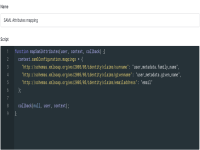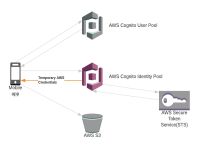How Headless CMS work
Jun 25, 2023

Headless CMSs came about because it is hard to build a single platform that content writers like using and software developers like maintaining. A balanced attempt to please both groups always ends up sacrificing user experience. This difficulty arises because the editorial and product development processes are entirely different models. Combining these two processes into a single value chain creates a monolith business and software system that is hard to extend and has longer release cycles. The solution lies in separating the processes into two parts:
- A backend for storage, manipulation, and security of content.
- One or more frontend (s) for content generation and display.
Both parts need software developers, but they support different process flows. Software developers can split themselves into three teams for content - content-ops, content-API, and content tools. Each team can then focus on supporting different parts of the business and user personas. The content-ops team can focus on aggregation, storage, and analytics. The API team builds a mechanism for secure and efficient content retrieval. The content-tools Team supports content writers and the editorial process tools. There can be more teams to support separate form factors such as web, mobile, AR/VR, and so on.
Backend Components
The "headless" part of the architecture consists of the content-ops and API Teams that manage the following.
Inward Integrations / Sources
Inward integrations can be from a variety of sources, such as the following. The source adapters would conform to an Ingestion spec, and developers implement them as plugins.
- Other CMS
- E-commerce sites like Shopify
- News feeds
APIs
Developers build the APIs around the content domain. A simple domain would be as follows. Business functions may split these APIs depending on their responsibility. For example, there may be a Post API with read-only attributes while another manages visibility rules.
- Posts
- Pages
- Tags
- Authors
- Subscriptions
- Site Analytics
- Search
Outward Integrations
The aggregated data can be made available for external systems using the following.
- Webhooks
- Lambda / serverless functions: invoked with
- Forms
Frontend Components
The part that makes the CMS headless is that the content tools and presentation layer are independent of the CMS backend.
Content Tools
- Page creation tools are composable with posts, reusable components, and widgets.
- Typically, editors support composition, reviews, corrections, and other editorial flows.
Presentation Apps
Presentation apps on the web or mobile present additional capabilities, such as
- Archives
- Sitemap
- SEO
- Open Graph meta-data
Integrated Capabilities
A single platform that follows the high-level architecture can provide both backend and optional frontend capabilities. Some well-known examples are Contentful, Adobe Experience Manager, ContentStack, Strapi, and Storyblok.
Related Posts
Authentication and Authorization with AWS - Cognito SAML Integration
Nov 14 2021
AWS Cognito integrates with a corporate identity provider such as Active Directory (AD) using SAML.
Authentication and Authorization with AWS - Federated Access
Nov 21 2021
AWS Cognito Identity Pools provide authenticated users access to AWS resources.
Authentication and Authorization with AWS - Cognito Sign-up and Sign-in
Oct 17 2021
Amazon Web Services (AWS) provides Cognito to delegate authentication and authorization out of applications completely.
Authentication and Authorization with AWS - About IAM
Sep 12 2021
Amazon Web Services (AWS) references a dizzying number of concepts, resources, patterns, and best practices to provide a fully managed…
Authentication and Authorization with AWS - API Gateway
Dec 29 2021
AWS Cognito User Pools and Federated Identities can be used to authorize API gateway requests.
Message Delivery Guarantees with ActiveMQ
Aug 17 2019
Apache ActiveMQ is a mature messaging middleware.
How Time-based OTP (TOTP) works
Sep 10 2023
The adoption of two-factor authentication (2FA) has been steadily growing over the past three years.
How this Blog Works
Nov 15 2020
I find myself scratching my head everytime I need to explain the inner workings of my blog. It is not because it is special or complex.
Flux-CD Pattern for AWS CDK8s Services
Jul 9 2023
AWS Cloud Development Kit for Kubernetes called generates Kubernetes manifest files for Kubernetes () deployments and services.
Password-less Web Login with a Mobile App
Apr 17 2022
If you have used Whatsapp web, you have experienced the use case explored in this post.
Technical Decisions that you'll Regret Later
Jan 28 2024
Software development Teams make many decisions while building systems.
Lessons from Service Oriented Architecture (SOA)
May 23 2021
SOA invokes mixed feelings amongst Software Architects and Developers. It began with a promise but ended up confusing people.











